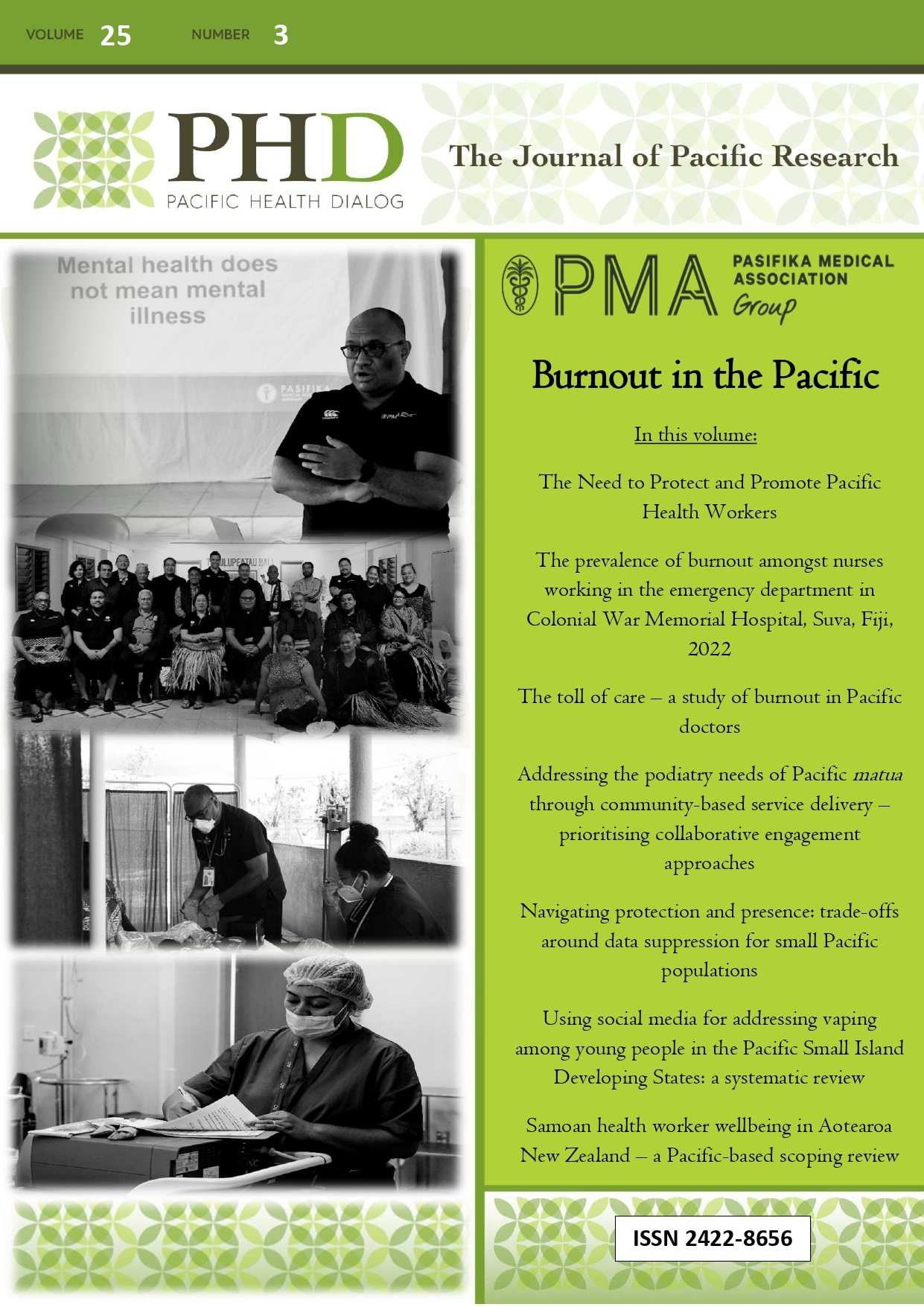Using social media for addressing vaping among young people in the Pacific Small Island Developing States: a systematic review
Main Article Content
Abstract
Background: Vaping is now the most common form of nicotine use among young people, despite potential harms. The Western Pacific region (WPR) has one of the highest numbers of young vapers among the World Health Organization (WHO) regions. This is concerning as the Pacific Small Island Developing States (PSIDS) within the WPR are home to some of the most vulnerable nations in the world. Social media has been demonstrated by previous research as an effective medium for influencing the knowledge, attitudes and behaviour of young people about the harms associated with vaping. However, these studies have been conducted in high-income countries, and to our knowledge, no social media interventions addressing vaping among young people have been tested within the PSIDS. Therefore, this review aims to explore the effectiveness of using social media for addressing vaping among young people, identify features associated with success and consider the applicability of this study to the PSID region.
Methods: We searched Google Scholar, Scopus and PubMed (2010-2024) for articles, including assessing selected articles’ references. We included studies that used social media as intervention platforms for the harms of vaping and provided knowledge, attitudes and behavioural outcomes after the intervention.
Findings/Outcomes measure: Twenty-seven original studies showed that both social media–only interventions and integrated multi-component programmes involving social media led to shifts in knowledge, attitudes, and behaviours among young people aged 10–24 regarding the harms of vaping. However, the applicability of this finding to the PSIDS remains unclear. This review identified several considerations that must be addressed before adapting such interventions to the PSID region. Key among these is the adequacy of telecommunication networks, the strength of support infrastructure within these nations, and the digital skills required to engage effectively with social media–based programmes.
Conclusions: This review highlighted a range of studies demonstrating the effectiveness of social media-based vaping interventions. Given the widespread use of social media and its relatively low implementation costs, it may serve as an important vehicle for risk communication to reduce the burdens of preventable nicotine-related illness within the PSIDS.
Article Details

This work is licensed under a Creative Commons Attribution-NonCommercial-ShareAlike 4.0 International License.
Articles on this website and article downloads are provided free of charge by Open Access under a Creative Commons with the author retaining all copyright to the material. eg © PacifichealthDialog 2021. Except as provided by the NZ Copyright Act, no part of this publication may be reproduced or stored in a retrieval system in any form or by any means without the prior written permission of the copyright owner and the Pacific Health Dialog. Manuscripts can be used for private study but must not be used for commercial purposes.



